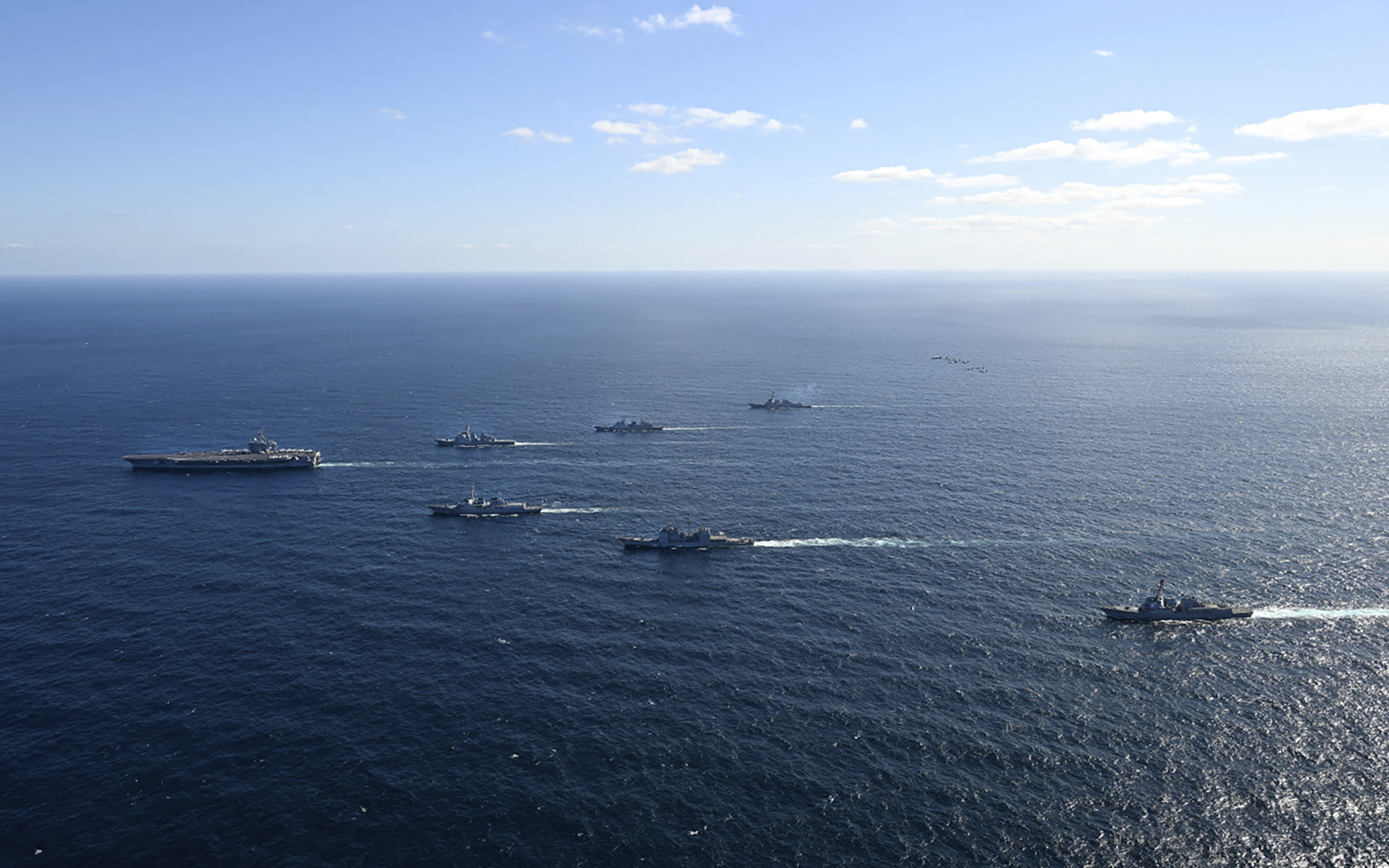
North Korea has tested a nuclear-capable underwater attack drone in response to joint naval exercises involving South Korea, the United States and Japan, state media say.
Pyongyang tested the Haeil-5-23 in waters off the east coast as the US and its allies were “seriously threatening the security” of the country and “destabilising the regional situation”, North Korea’s Ministry of Defence said in a statement carried by the Korean Central News Agency (KCNA) on Friday.
“Our army’s underwater nuke-based countering posture is being further rounded off, and its various maritime and underwater responsive actions will continue to deter the hostile military manoeuvres of the navies of the US and its allies,” the statement said, warning of “catastrophic consequences” for the US and its “followers”.
North Korea last year claimed to have tested the drone twice, touting its ability to carry out sneak attacks and destroy enemies with a “radioactive tsunami” generated by an underwater explosion.
The weapon’s operation has not been independently verified, and South Korean officials have said its capabilities are exaggerated.
Washington, Seoul and Tokyo this week conducted joint naval drills involving nine warships, including the aircraft carrier USS Carl Vinson, off South Korea’s south coast.
The allies announced the drills after Pyongyang said on Sunday that it had tested a new solid-fuel missile fitted with a hypersonic warhead.
‘Exotic system’
While there wasn’t much in the public domain about the drone tested, “what we do know about it, if it’s close to what they tested last year, is that this underwater unmanned vehicle is likely quite slow. It’s a very exotic system,” Mason Richey, a professor at the Hankuk University of Foreign Studies in Seoul, told Al Jazeera.
“It probably runs only something around eight knots per hour, which is somewhere around 14 or 15km [8.6-9.3 miles] per hour. It’s probably quite vulnerable to anti-submarine warfare.”
Its value was more likely “political signaling”, rather that its military use, Richey noted in light of the US, South Korean and Japanese drills.
“This does not make North Korea happy, and the political signal from this message here is quite clear – that it’s going to continue to develop its nuclear arsenal in this sort of … spiral situation that we find ourselves in now,” he added.
Al Jazeera’s Eunice Kim, reporting from Seoul, said: “What we didn’t see are images of what this system looks like, its specifications.”
Tensions on the Korean Peninsula have been elevated in recent months amid Pyongyang’s repeated weapons tests and moves by its leader Kim Jong Un to roll back efforts towards reconciliation with South Korea.
On Tuesday, state media reported that Kim had ordered the closure of several government bodies dedicated to inter-Korean rapprochement after determining that reunification was no longer possible.
On Thursday, the nuclear envoys of the US, South Korea and Japan gathered in Seoul to condemn Pyongyang’s weapons tests and its trade in armaments with Russia.
The ongoing tit-for-tat trend took a turn for the worse, our correspondent said, with Kim’s policy address this week “that South Korea would no longer be regarded as kin but as a foreign state, its number one enemy that should be subjugated in the event of a nuclear war breaking out in on the peninsula”.







